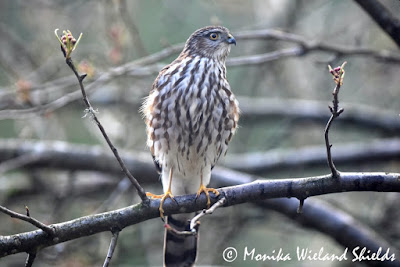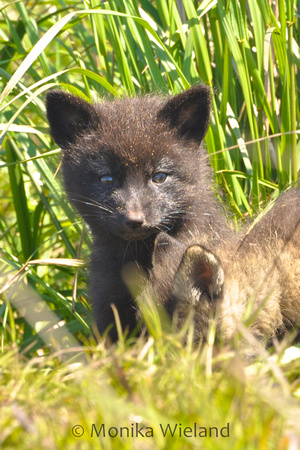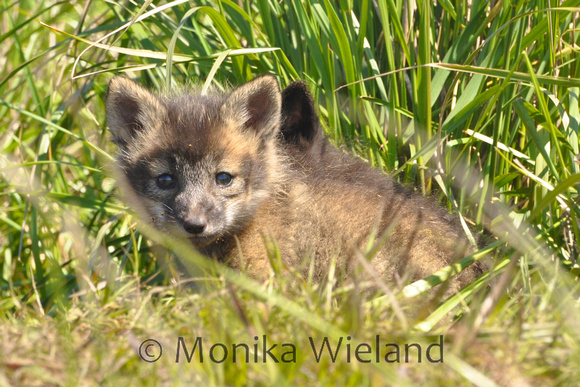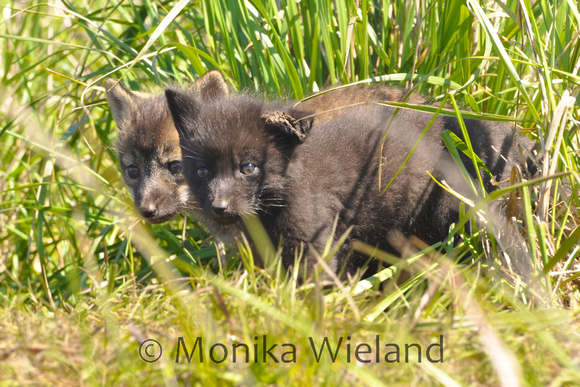While it's been hard to find the motivation to blog in the last month, it hasn't been hard to find the motivation to go out into nature. Not only is April one of my favorite months on San Juan Island regardless, but it's been especially comforting to find some peace and sense of normalcy in these crazy times.
Before things really shut down and the stay at home order was put into place, we got out for one more on the water encounter with J-Pod in San Juan Channel back in mid-March. As we're quickly heading towards an unprecedented April with NO orca encounters, those two encounters from March are extra special and moments I replay often in my mind!
 |
| J-Pod in San Juan Channel on March 21st |
Without whale encounters, the spring bird migration has received my extra attention, especially because I've been participating in two unique challenges over the last few weeks. One is an extension of our year-long challenge to photograph as many vertebrates as we can in 2020; since many of us are restricted to much closer to home for the time being, we're doing a mini 6-week photo blitz to see how many bird species we can photograph within 1 mile of our home. I had hoped to get 30 species, but am surprised to already have more than 50, with a week to go!
 |
| Hanging out with a red-breasted nuthatch in our yard |
The other challenge is an extension of the year-long Fantasy Birding effort I'm participating in for the second year. What is Fantasy Birding, you ask? It's along the lines of fantasy sports, where you pick real-life players to be on your fantasy sports team and gain points based on the actions they take in real-life games. Here, you pick a region to virtually bird-watch in, and you score points based on lists real birders submit in that area to eBird. Again, due to everyone staying at home much more, we've started a sub-game called the Yard Squad Challenge. Captains chose birders from around the country (plus one international player per team) to bird their yards for four consecutive two week periods, and the race is to see which team can see the most species collectively. Both of these games, on top of the stay at home order, have meant daily bird walks from home and lots of time spent observing the changes in my neighborhood, whereas in previous years I might have watched the migration from further afield (like last year when we went to Westport!).
 |
| Watching migration from close to home means many more "first of the year" birds in our yard - like this yellow-rumped warlber |
One highlight of this very local birding was a couple of weeks ago when, for every morning of the week, you could reliably see/hear all 5 of our local woodpecker species within a quarter-mile of our house: downy woodpecker, hairy woodpecker, northern flicker, pileated woodpecker, and red-breasted sapsucker.
 |
| The red-breasted sapsuckers have, in my opinion, the best drumming ditty of any woodpecker, made even better when executed on a man-made metal surface |
 |
| A northern flicker briefly visits our suet - actually the hardest of our 5 local species to get a photograph of this year! |
There's also moments like this quick visit from a sharp-shinned hawk to our feeder tree, which are likely to be missed when we're not at home as much. This juvenile was not successful in picking off any of our other visitors....this time!
And nothing says spring to me like the return of the swallows. Every year a pair of violet-green swallows checks out our nest boxes, but they have yet to use one. Will this be the year?
Thankfully, while some public lands are closed, other local natural areas have been open, so we have been able to go out and bird elsewhere on the island as well. This has turned up some other great finds that we definitely wouldn't have been able to see in our yard!
 |
| A bald eagle landing on a rocky shoreline with the Olympic Mountains in the background |
 |
| A singing savannah sparrow |
False Bay has been especially successful in turning up shorebirds this spring.
 |
| A flock of dunlin |
Thanks to a tip from a friend and fellow birder, we also got to see a whimbrel there, a new species for my county life list!
A few of our winter seabirds are still lingering, and some of them like this horned grebe are giving us a rare glimpse (for here) of their summer plumage before departing.
In late April/early May of each year, English Camp and the Mt. Young trail can always be counted on for many "first of the year" species, but this year was a personal record where in a single morning I added my first house wren, Cassin's vireo, chipping sparrow, Pacific-slope flycatcher, Townsend's warbler, and black-throated gray warbler all in one visit!
 |
| First singing house wren of the year at Mt. Young |
I returned a day later to try for some audio recordings, and was surprised to find another species: a Townsend's solitaire! I only see one of these on the island every few years, and this time it wasn't a single one, but at least five of them.
Regardless of what's going on in our crazy human world, there's some comfort to be found in the fact that the cycle of life is continuing on in the natural world. I am very thankful all this is happening in the spring, as I can't imagine going through this without the ability to spend a lot of time outside in the sunshine!
I will cut this post off here so it's focus remains on the birds, but there's another species that's an icon of spring on San Juan Island, and they deserve their own post!





































